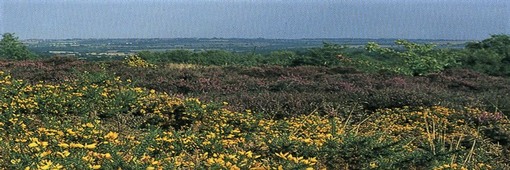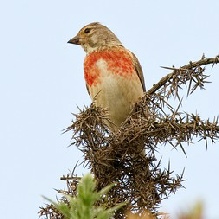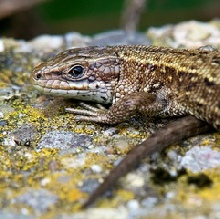

Biodiversity
Action
Plan

Features of Lowland Heath supporting wildlife species.
The presence and numbers of characteristic birds, reptiles, invertebrates, vascular plants, bryophytes and lichens are important indicators of the quality of the lowland heath habitat.
Heath is largely the result of historic management through woodland and scrub clearance, followed by grazing, failing or rotational burning.
In the absence of intervention, the process of succession leads to heathland areas becoming woodland with only smaller areas of heath present in any more open areas. Management is therefore essential to maintain heathland as a valuable habitat for a range of species.
Species supported by lowland heath
Plants: Lowland heath consists of combinations of Heather, Bell Heather, Cross-leaved Heather, Bilberry and Gorse species. Specialised plants including bryophytes and lichens may be found.
Invertebrates: At least 40 species of insect feed on heather and heathland supports a wide range of invertebrates including bumblebees, butterflies and moths, spiders, and,where pools are nearby, dragonflies.
Invertebrate species include: Bilberry Bumblebee, Green Hairstreak butterfly, Green Tiger Beetle
Reptiles: Common lizard; Adder and Slow worm although there are no or few recent adder and slowworm records
Mammals: Brown Hare, small mammals
Birds: Nightjar has heathland as its
primary habitat. Heathland also supports
Linnet, Whinchat, Stonechat, Wheatear.
Lowland Heath Features
Heathland in ‘favourable condition’ consists of a dwarf shrub layer (heathers and bilberry) at different stages of growth, including areas of young and mature heather, and varying heights and cover. This can be achieved with rotational, non-intensive management of different areas.
Dwarf shrubs should be seen as one heathland feature along with other features. Areas of gorse, lichen, bare ground, and acid grassland with flowering plants and tall herbs, support a wider range of wildlife species, as can scattered trees and limited scrub.
An important feature is shelter - provided by vegetation or the shape of the land, to reduce wind speeds and create warmer microclimates.
Mosaics of heath and acid grassland add to the biodiversity. A mix of dry heath, wet heath and occasional pools create a rich and diverse habitat which supports other important plant species including lichens and mosses.
With any enrichment of the ground and disturbance, patches of brambles and more dominant gorse can develop, detracting from the value of the habitat as heathland.
It is important to maintain as much structural diversity as possible in order to provide for species with widely differing requirements.

